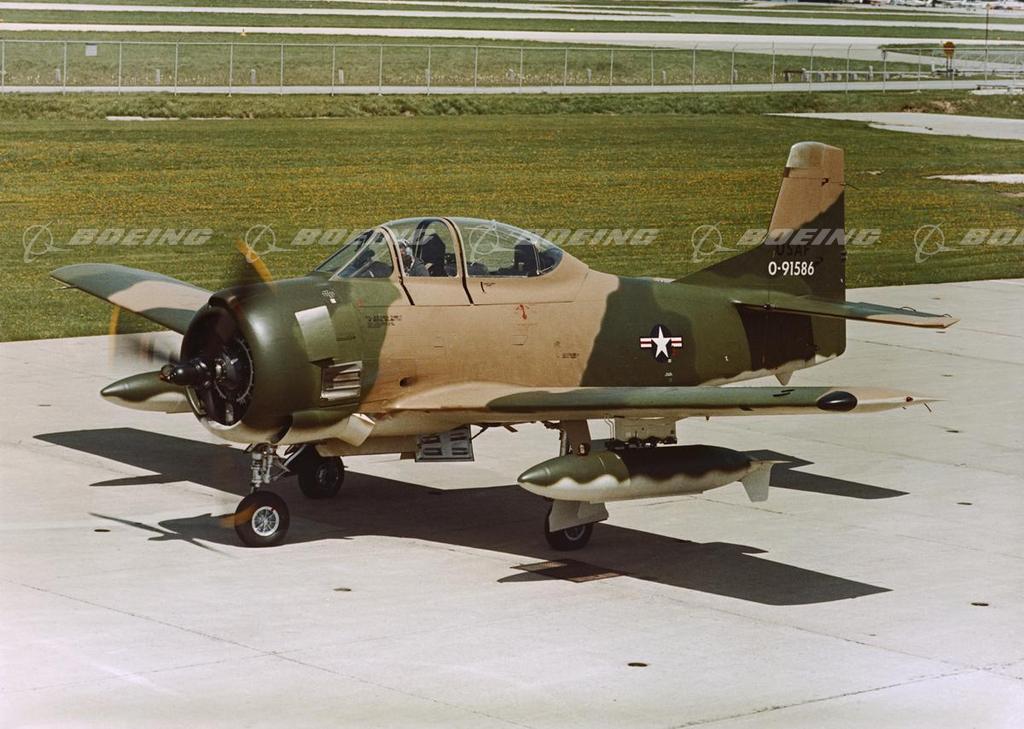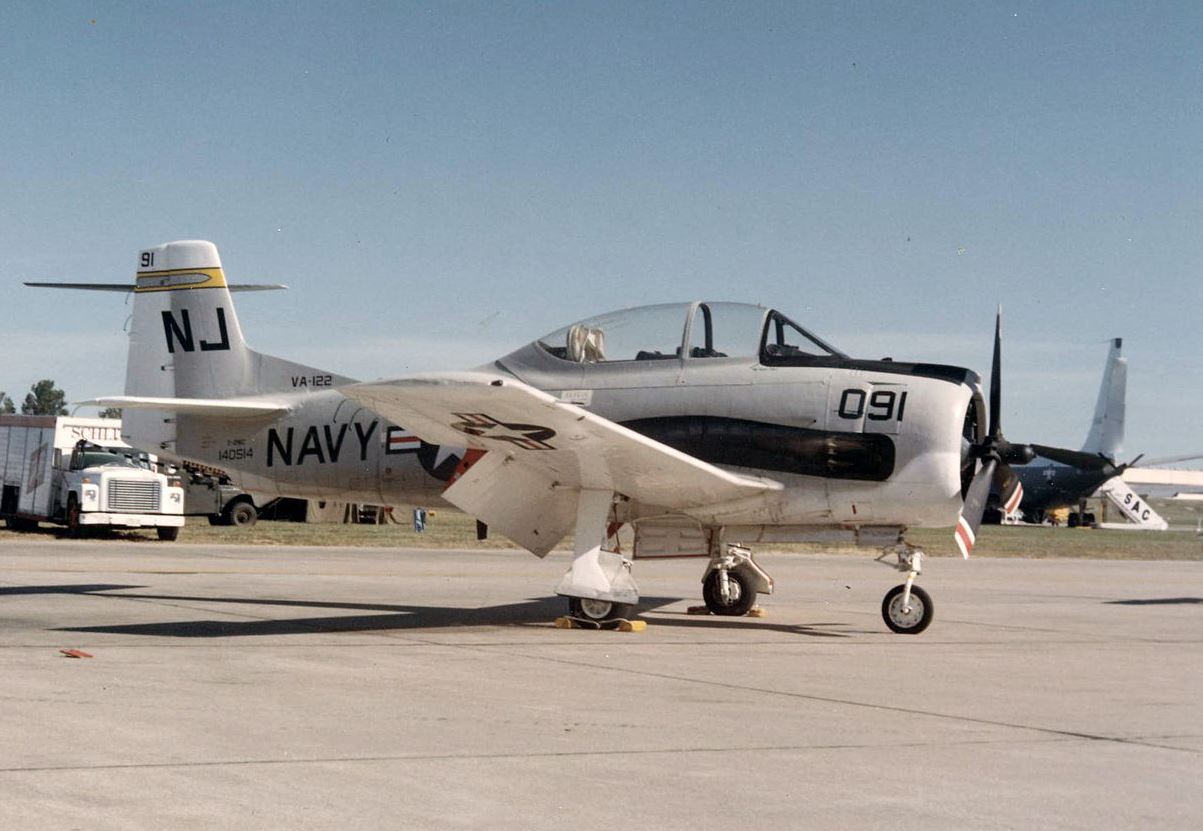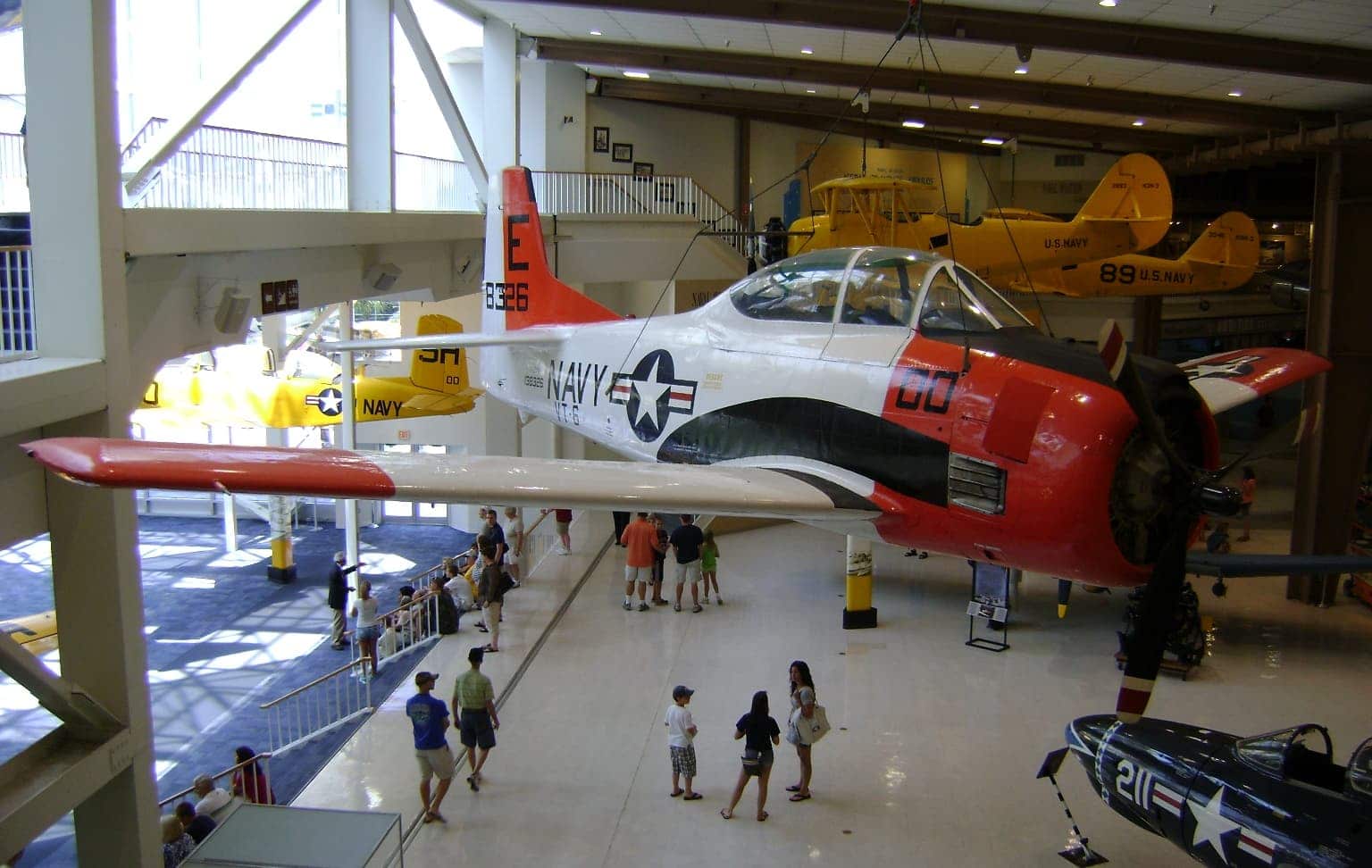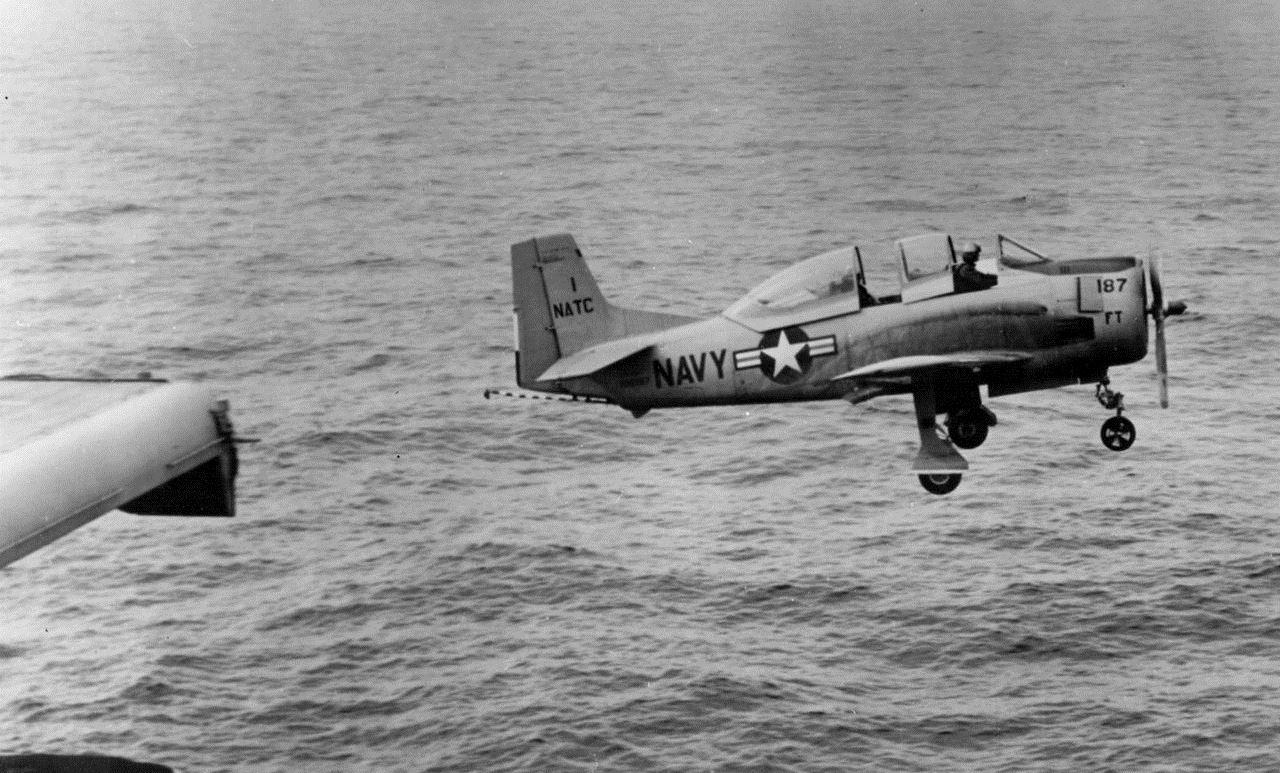Trojans Go to War
Remember all those retired Air Force T-28As? Many of them were rebuilt to a new standard—the T-28D. Commonly referred to as the Nomad, these counter-insurgency (COIN) attack aircraft saw combat in Southeast Asia for much of the war. Equipped with various versions of the R-1820 engine and strengthened wings, Nomads carried various combinations of gun pods and bomb racks.
Armor was installed to protect the crew, and together with the other modifications, this resulted in a top speed of 299 knots (345 miles per hour). Some of the Nomads were also equipped with ejection seats.

Learning the COIN Mission
The first T-28s to see combat were actually converted from former Navy T-28Bs. As part of Operation Farm Gate, the USAF’s 4400th Combat Crew Training Wing (CCTW) deployed to South Vietnam in 1961 to train South Vietnamese pilots, who operated T-28Ds throughout the war.
The USAF equipped several Special Operations Squadrons (SOSs) with T-28Ds and AT-28Ds and operated them from bases in Southeast Asia until the type was finally retired from combat use in 1972. France operated T-28S Fennecs as COIN attack aircraft. Interestingly the Fennecs were powered by the same version of the R-1820 used to power the Boeing B-17 Flying Fortress.

The International Trainer
In addition to the United States Army, Air Force, Navy, and Marine Corps, T-28s and derivatives thereof have been operated as trainers or in combat by Argentina, Bolivia, Brazil, the Democratic Republic of Congo, Cuba, the Dominican Republic, Ecuador, Ethiopia, France, Haiti, Honduras, Japan, the Khmer Republic, Laos, Mexico, Morocco, Nicaragua, the Philippines, South Korea, Saudi Arabia, South Vietnam, Tunisia, Taiwan, Thailand, Uruguay, Vietnam, and Zaire.

Popular Warbirds and Restoration Projects
Today, T-28s are popular warbirds around the world. Although not miserly when it comes to fuel consumption, T-28s are still light on the controls, easily flown, and good warbird values. Several are usually for sale at any time, from meticulously restored examples to essentially stock aircraft ready for flight or restoration.
There was even a lot of 40 ( ! ) stock and mostly unassembled Navy surplus T-28Bs and T-28Cs, many with full logbooks, recently available for sale as an entire lot or individually. Once (justifiably) famous for leaking oil from that big old radial engine, available upgrades and updates have eliminated most of the mess.

A Well-Supported Warbird
The North American Trainer Association (NATA) is an excellent networking resource for owners. The Trojan Horsemen and the Trojan Phlyers flight demonstration teams are popular airshow attractions flying their T-28s. The T-28 may not be flush-riveted or shapely (it is, in fact, huge!), but it performs better than many other piston-engine warbirds and has two seats!

Bonus Video
Enjoy this T-28C training film uploaded to YouTube by 1649075.
[youtube id=”MH1G6k_N6J8″ width=”800″ height=”454″ position=”left”]

[…] the Curtiss C-46 Commando and Douglas C-47 Skytrain airlifters, Douglas B-26K Invader bombers, and North American T-28D Trojan counter insurgency (COIN) aircraft, the group is still operational as the 1st Special Operations […]